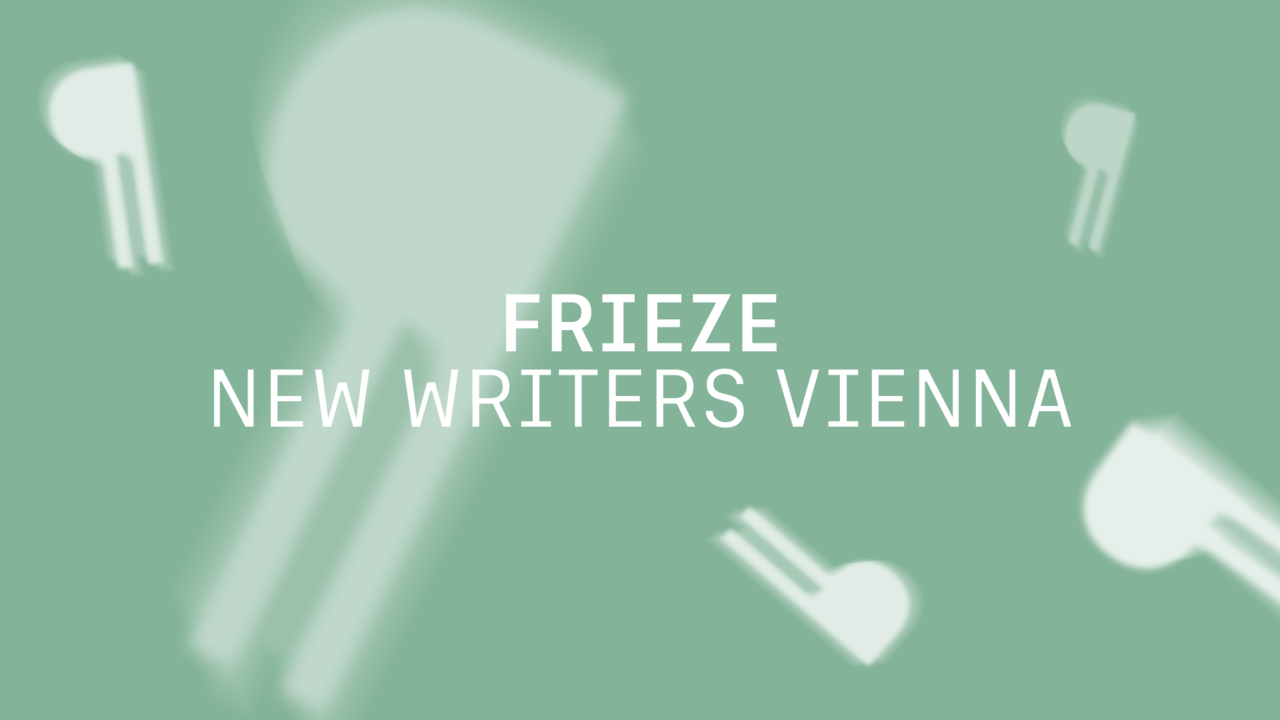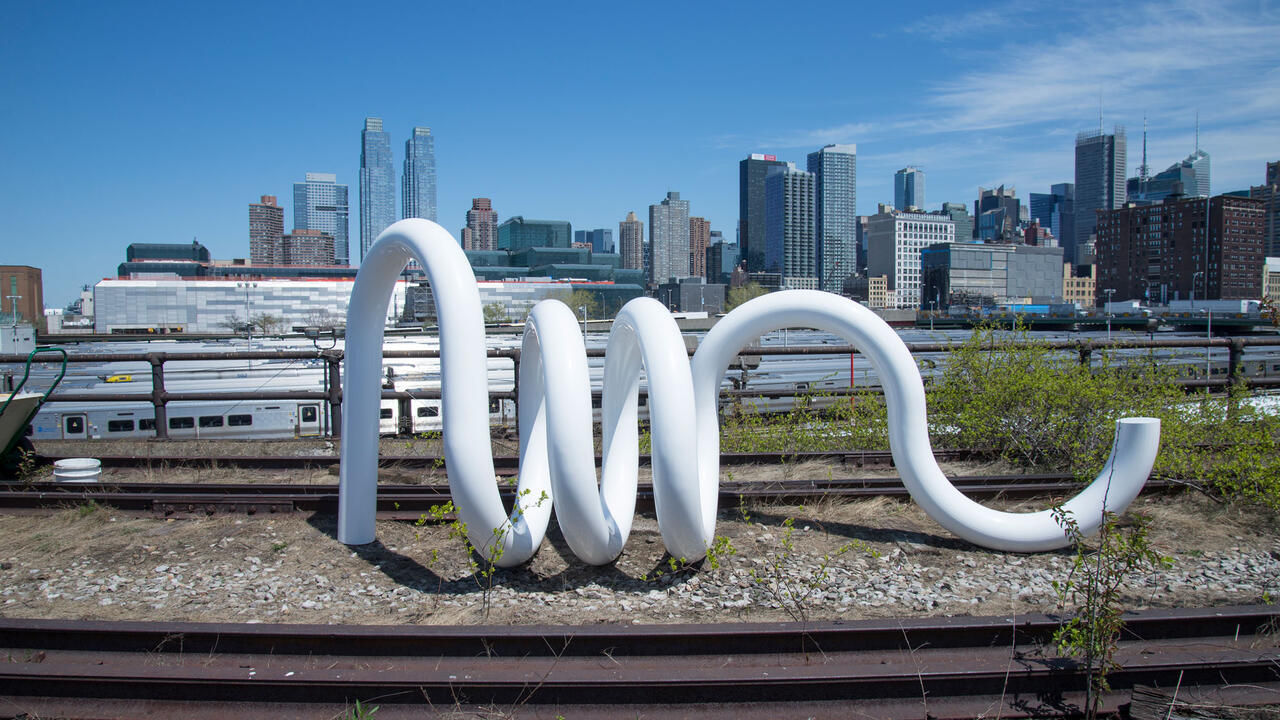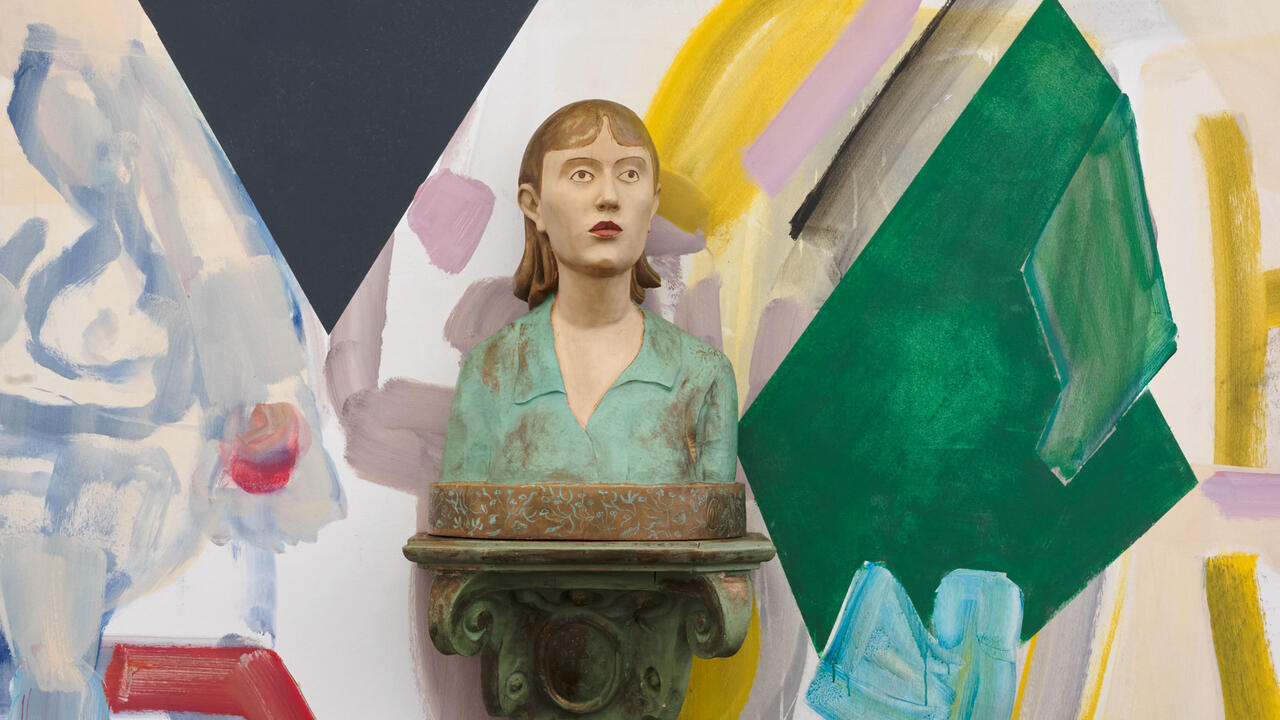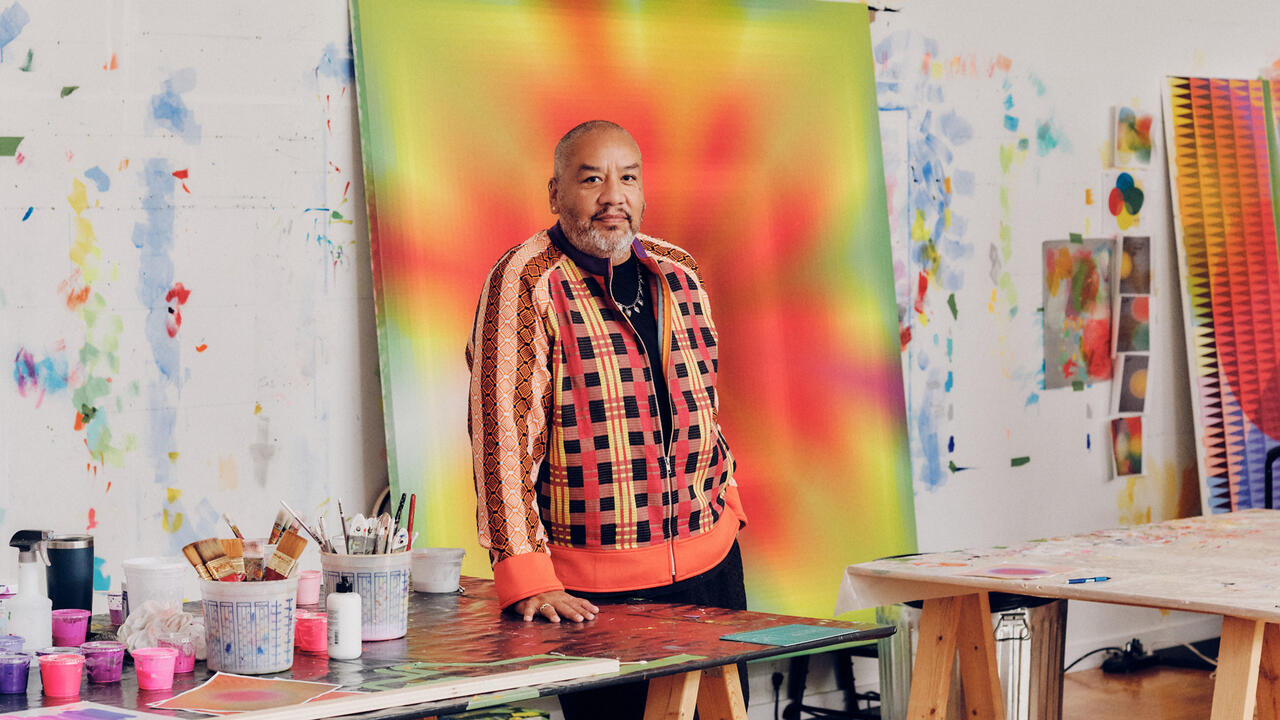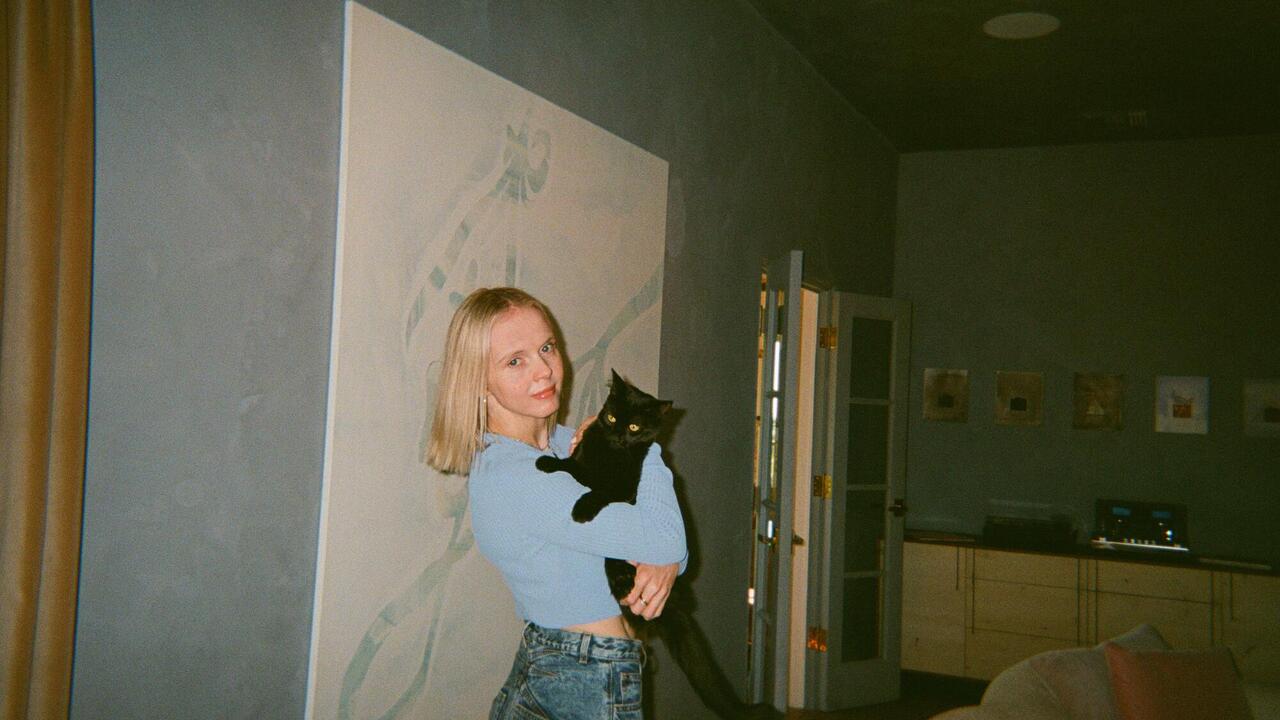‘Set the Mind to Mute’: Aliki Panagiotopoulou in Conversation with Quinn Latimer
The Athens-based artist discusses how desire figures in her new film, the relationship between writing and images and the influence her home city has on her practice
The Athens-based artist discusses how desire figures in her new film, the relationship between writing and images and the influence her home city has on her practice

Language – its fact, suggestion, strange lapses, necessities and pressure points of ardour – loops, ever elliptically, through the work of Athens-based artist Aliki Panagiotopoulou. Her films, photographs, paintings and sculptures, though mostly abstract, or at least abstracted, have a narrative pulse that seems to emanate from the mouth. These literary tinctures are found often in her titles (see: Uterus of a Young Boy, 2018) but can emerge more straightforwardly, as in the sound piece Soft Contours on Archetypical Solids, a 2017 recording that begins: ‘A young artist died last night; I read all available material … There’s a full moon in Scorpio’, before noting, plainly: ‘Mum’s the word.’

Quinn Latimer: Your new film concerns the giant kouroi of Naxos – these enormous marble sculptures of male figures that you told me ‘could have been gods’ if they were not abandoned. Can you tell me a bit about this film, which will premiere this month in Athens?
Aliki Panagiotopoulou: The film is very short in duration; it’s more of a film collage. Its layers are both digital and analogue, static and in motion. I suppose part of it is about looking closely at male figures in general and the male figure in particular, but not with a defined intent. They are statues that never performed their function: their features are vague, their sex, their face. Because of their structural flaws they were left where they were made or where they broke. Their potential as monuments was never realized. I find something incredibly beautiful about this.
QL: Why look closely at the male figure in particular? Are you looking at these male sculptures as a woman artist, or as something else?
AP: As a combination of things: like a child looking at the body of an adult, or an adult looking at the body of a giant. It doesn’t necessarily matter if it is the male or the female figure that is being looked at; it is the degree of their idealization that is important.
QL: How does desire figure in your work?
AP: Sometimes it does as absence, as cancellation, as fuel, as a joke. I can’t capture the beauty, the magic of it. However, I wonder if there isn’t something cynical in addressing desire too often, in the sense that one becomes too familiar with their material, too aware of their construct. Maybe the greatest love poets are close to cynicism the way comedians are close to sadness.
QL: You mentioned once that you ate lotus for the first time on a trip to Egypt with your mother when you were an adolescent. The Naxos kouroi were made at a time when Greek statuary was still influenced by the Egyptians, whose gods were greater or at least larger, no? What remained of that trip for you?
AP: The most formative thing about that trip was the absolute dominance of the exterior world over the interior and how conscious I was about it. It’s also when I started building my own gods.
QL: You mentioned a possible title for one of your new works, Uterus of a Young Boy, which has shades of Rilke, somehow. Where did it come from?
AP: It’s the better line of some notes about dreaming and people in extraordinary circumstances. I was thinking about how the body displaces itself from its material status, how imagination or something else takes over when we are in pain, physical or otherwise, how the mind compensates.
QL: How do you understand the relationship between writing and still or moving images in your work?
AP: Both photography and writing are a means to capture, to document something fleeting before it disappears: a dream, an idea, some strange juxtaposition between this and that which can later be edited or censored completely. They are media that respond to urgency and they are light to carry, which I like very much. They offer the luxury of seeming peripheral when they can become central. I haven’t thought of what creates this interdependency between literature and photography, but I wonder if it isn’t something to do with the nature of reality that they are addressing, that maybe photography captures things that language was made to describe. What do you think?

QL: Many artists today work in a literary way with moving images — the essay film, etc — but I am thinking of older examples who traversed more traditional genres. For example, Susan Sontag, who wanted to be a filmmaker maybe more than a novelist, and then Marguerite Duras, who turned her books into films and then her films into texts with such mutability, fluency. What about your installation at the Benaki Museum in ‘The Equilibrists’ show in 2016, organized by the New Museum? There was something cinematic about it, as well as advertorial – which has something to do with language.
AP: Advertorial is a great word for what it was. Fillers and Μarkers (2016) was a lot about blurring the lines between materials in regards to form and between redundancy and significance in regards to content. It was also literally a still life of ceramic containers and Pantone markers set up against colourful backgrounds.
QL: What about Athens? What does it mean to continue to work in the city you grew up in? Is your childhood that much more present?
AP: I use things from the family archive which maybe I wouldn't have if I had chosen to live in another city, if I didn't have this proximity to accumulation that permanence creates. Geography or something that pertains to a certain location may act as triggers, but memory, as resource and influence, permeates everything. We carry it with us everywhere.
QL: What are you reading? This summer, on the island of Andros, where we both were, you suggested that we use the books we were reading as stand-ins for the I Ching. I think we used Sontag’s early notebooks, as well as a Maurice Blanchot book you had. How influential has writing and reading been on your work?
AP: Being a reader has been more formative in what I do than anything else. It has defined my apprehension of how artworks might operate; the revelatory sensation of the ineffable being articulated. Can we talk of objects as being articulated? But the experience of an object can also set the mind to mute, the way, for example, Agnes Martin’s work does, this pre-lingual state it taps into, this resonant silence. It’s very interesting to read her writing in relation to that.
QL: Objects do ‘set the mind to mute,’ it’s true. What is it about the pre-lingual state that interests you?
AP: I wish I could erase myself or evolve to such a degree as to transgress language, to make telepathic works, to not have to use materials at all, but I keep getting in the way.
Aliki Panagiotopoulou is an artist based in Athens, Greece. Panagiotopoulou studied painting at the Athens School of Fine Art and received her MFA from the Slade School of Art, London, UK. In 2018, she had solo shows at ARCH, Athens and participated in a group show at Eleftheria Tseliou Gallery, Athens. She opens a new solo show at Radio Athènes, Athens, on 14 November as part of its ‘A Book Affair’ series of literary-minded projects, presented in conjunction with the Goethe-Institut.
Main image: Aliki Panagiotopoulou, Uterus of a young boy, 2018, video still. Courtesy: the artist and Radio Athènes


